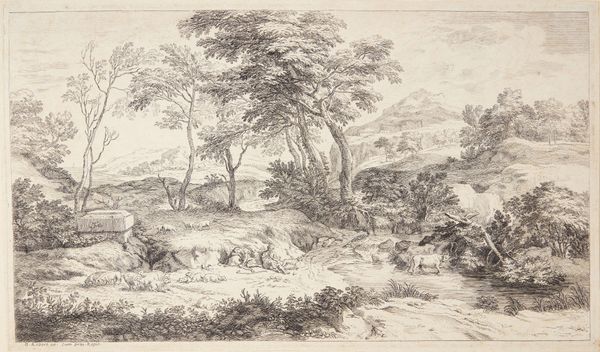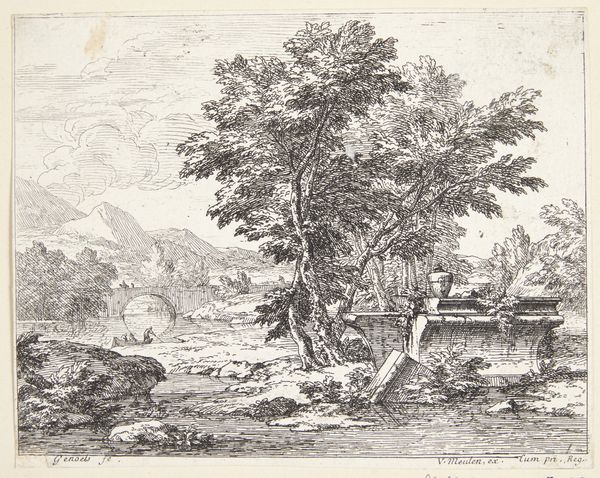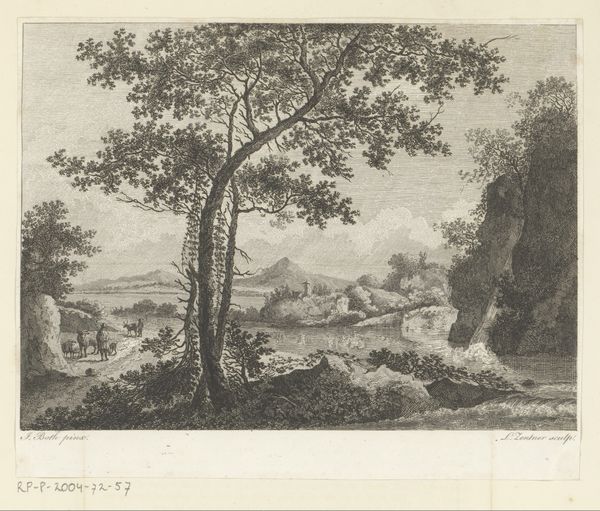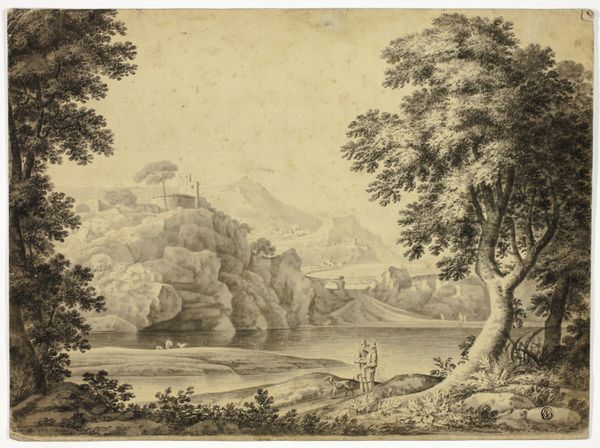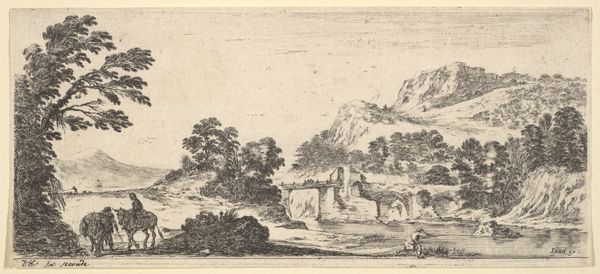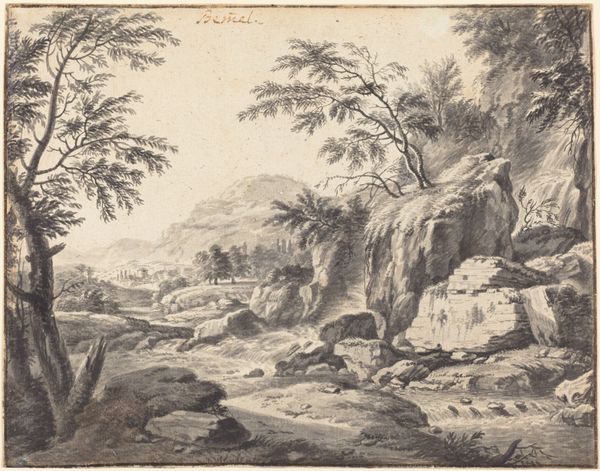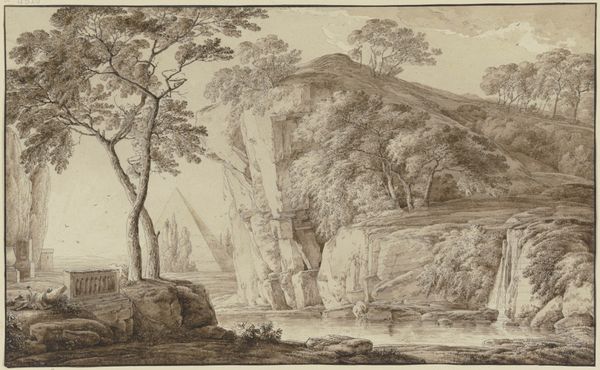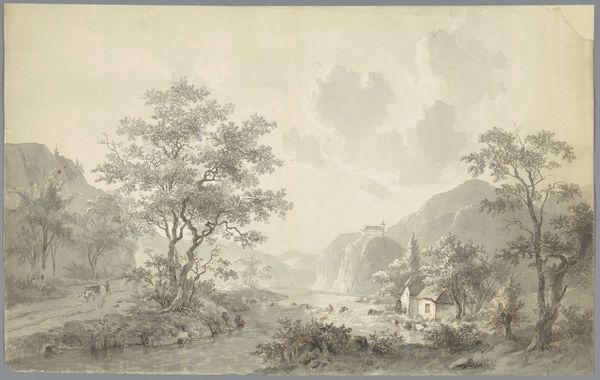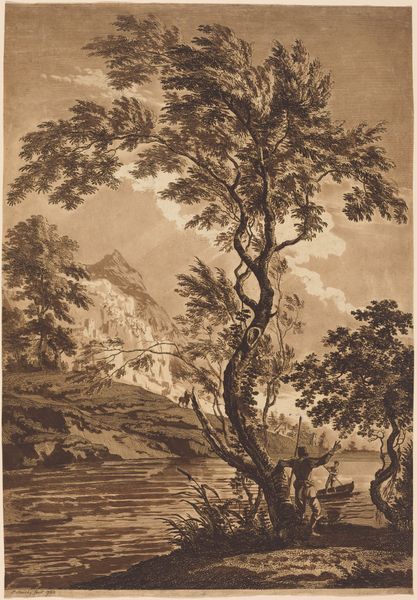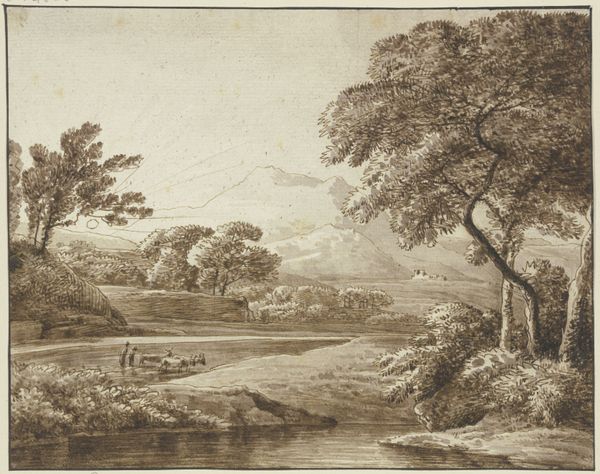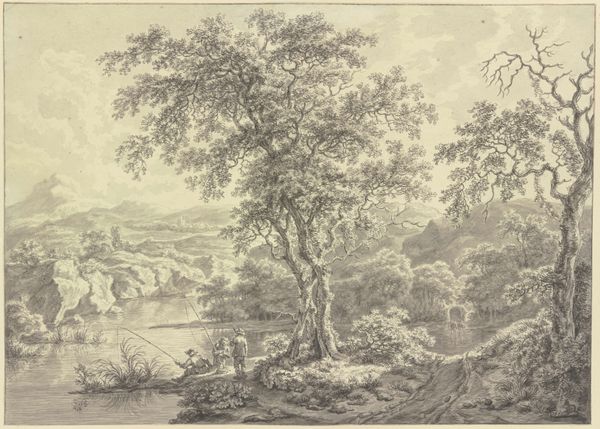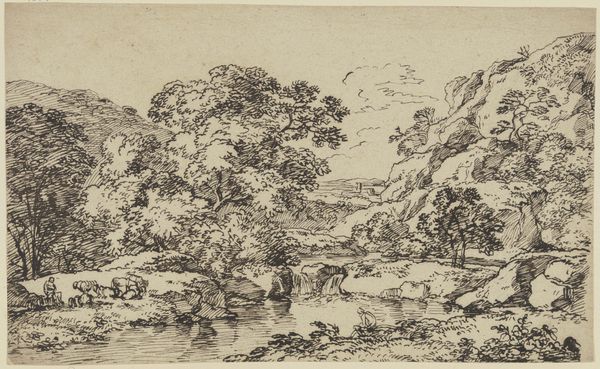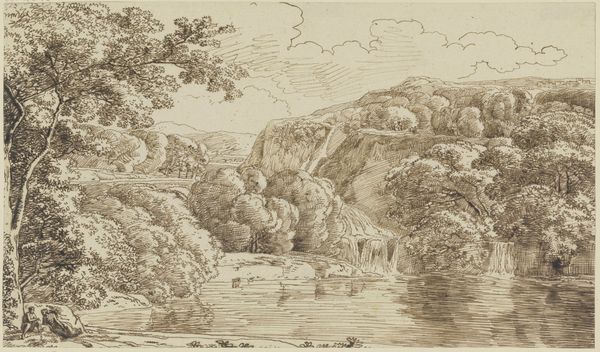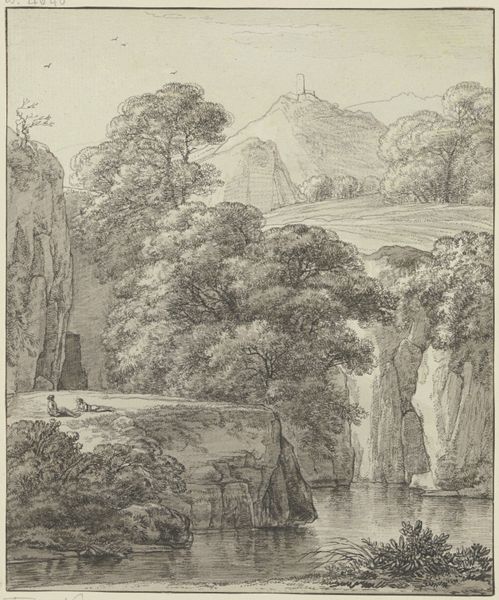
Dimensions: 379 × 489 mm
Copyright: Public Domain
Curator: Looking at this piece, "Hilly Landscape with Figures Beside Waterfall" by Gerard van Nijmegan, created around 1785, one can immediately see the Romantic sensibilities at play. It feels very much of its time, doesn’t it? Editor: Yes, the Romantic era jumps right out at me. It has an airy feel, almost dreamlike, doesn’t it? What grabs my attention first is how it has a sense of peace but it depicts, through material use, all the things needed for agrarian life in that time period, such as donkeys, merchants and what looks like trade goods, to me this indicates a landscape very active with social life. Curator: Absolutely. Considering the period, it evokes the picturesque aesthetic but there is still a bit of a dark reality that speaks volumes of that social economic time period in European History. Editor: Speaking to that aesthetic quality, the texture achieved purely with pencil on paper really stands out. I find it interesting how much he conveys using such simple tools. There is that balance between natural representation with what is materially possible that has led to so much agrarian progress throughout that same time period. Curator: Agreed. The romantic element that depicts people working the earth but is not fully depicting a back breaking experience reminds me a bit of Rousseau. Even the waterfall, it feels like more than just an aesthetic feature and how it is naturally situated shows what raw materials are freely available to the merchants depicted. Editor: Exactly! It is like, from a social and historical reading, this period shows where people have understood how best to organize labor with respect to its natural resources that is only made more apparent with the Romantic lens. It all builds upon earlier landscape traditions, while introducing, in terms of art, something new in its medium specificity and style, something like a shift. Curator: It highlights that intersection perfectly. Overall, this drawing is amazing and has provided much food for thought as to this landscape, that the more closely looked at speaks volumes of a certain historical time. Editor: Definitely. The detail van Nijmegan captures shows this ongoing interplay between labor and environment but even more specifically between the human understanding of resource management through work and what ends up manifesting itself artistically on the work itself.
Comments
No comments
Be the first to comment and join the conversation on the ultimate creative platform.
